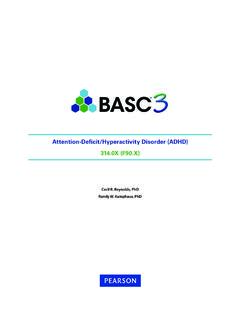Transcription of STACKING, PHASING and MA TCHING YAGIS
1 STACKING, PHASING and MATCHING YAGISThis is a synopsis of a talk presented to the Sydney VHF DX GROUP on Tuesday March 16th 1999 byGordon McDonald the stacking of YAGIS is being considered, the questions which usually arise are:1. What are the reasons for stacking anyway?2. Would building a bigger Yagi better suit our needs?3. If we stack, what order of gain increase can we expect?4. Is it better to stack vertically or horizontally?5. How far apart do we stack the YAGIS ?6. How do we manage the PHASING requirements?7. How do we manage the matching requirements?
2 We will endeavour to answer these questions WE STACKWe stack YAGIS in order to increase the gain over that obtainable from one Yagi and/or todecrease the beamwidth. The increase in gain is due to the reduction in beamwidth and it shouldbe noted that the beamwidth is reduced in the plane of stacking only. If we stack vertically thebeamwidth is decreased in the vertical or H plane of a horizontally polarised Yagi. Stackinghorizontally results in a narrower beamwidth in the horizontal or E plane of a horizontallypolarised Yagi. In some applications, such as interference from or to points off to one side orbelow the main lobe, the reduction in beam width is a more important consideration than the gainincrease.
3 However most people stack to get more WE USE A BIGGER YAGI INSTEAD?Yes of course we can. The increase in gain due to stacking two YAGIS approaches the limitof 3dB. We will see that this limit is overly optimistic in practice. Nevertheless, it is theoreticallypossible. So how much bigger would we have to make a Yagi in order to increase its gain by3dB? If you think about it, the answer is obviously about twice as big. Consider Figs. 1a and is a fairly big 2m Yagi with 13 elements on a six metre boom. It has a gain of and aclean pattern.
4 That is a pattern which has low side lobes in relation to the main lobe. Now look at and 2b. This is the same basic Yagi with its boom extended to twelvemetres in length, elements added as required and the whole subjected to some optimisationadjustments to clean it up a bit. Note that it too has a clean pattern. Its gain of is notquite a 3dB increase over the original, but close ( ). So, would you put that up? That boom is 40 feet long. How is your rotator going to stand upto the extra torque when the westerlies hit it?
5 How will the neighbours feel about it hanging overtheir backyard? No thanks! I would rather stack two of the six metre jobs. Still, the choice is yours. Someone may suggest that there are additional feeder losses in the stacked arrangementdue to the need to connect the two YAGIS together. This is true but there is also extra feeder lossdue to the need to connect your feeder to the dipole which will be further out from the mast withthe single Yagi. Not much in this OR VERTICAL STACK?What is your application? Do you think that it would be better to have a wide beamwidth in the H plane of your horizontally polarised antenna because you are into MeteorScatter?
6 Stack horizontally. Are you concerned that the power density due to yourtransmission is high in your neighbour s kitchen and that it would be better if you had anarrow beam in the H plane? Stack there a source of noise twenty degrees off to one side of your most used beamheading? Stack your horizontally polarised antennas horizontally. Are you interested inweak signals and simply want more gain? Stack four YAGIS - two up and two , it s up to , remember that horizontal supports near a horizontally polarised Yagi maygive rise to destructive FAR APART DO WE STACK?
7 The old rule of thumb was to stack at two thirds of the boom length. This idea waspresumably based on the aim of achieving a 3dB increase in gain over one Yagi. Look atFigs. 3a and 3b. This is the Yagi of Fig. 1 stacked at half and at two thirds the boomlength. Note that at half the boom length large lobes have appeared on each side of themain lobe and 14dB down. These are called grating lobes and they are due to thepattern multiplication process so that they appear within the area of the main lobe of asingle Yagi. The gain increase is two thirds the boom length the gain has increased to slightly more than 3dB overone Yagi according to the computer and the grating lobes have increased to less than 8dBdown on the main lobe.
8 If you had intended to reduce interference from or to some pointoff to one side or down from the main lobe this is obviously not going to help much. In factthe pattern has become very dirty .Digressing a bit: This idea of a 3dB increase in gain by stacking two YAGIS isexplained in some texts by invoking the concept of capture area It is explained that 3dBgain is obtained when the capture areas touch and do not overlap. However this ideadoes not lead to a stacking distance because, although the capture or effective area canbe calculated by A = Gain x Wavelength / (4 x Pi), this does not define the shape of thearea.
9 There is no doubt that the capture or effective area idea is very useful in someother aspects of antenna engineering. It is dealt with at length by Klaus in his book Antennas .Returning to Fig. 3b. Note that the main beam width is half that of a single Yagi. Thisis where the 3dB gain increase comes from. The beam width in the nonstacked plane ( E plane in this case) has not look at Figs. 4a and 4b. This shows the pattern for the original Yagi stacked metres or wavelengths. Note the clean pattern. No large grating lobes. The gainincrease is slightly more than over a single Yagi.
10 Most VHF DXers includingmoonbouncers now agree that this is the way to go. It has a better performance in termsof signal to noise ratio than an arrangement with more gain and a dirty does this mean that we stack all our YAGIS at wavelengths apart? Certainlynot. Remember that the grating lobes are within the area of the main lobe of the singleYagi. So if the single Yagi has a narrower beam to start with we can stack further apartwithout bringing up large grating lobes. Fig. 5. shows the 12m boom Yagi of Figs. 2a and2b stacked at 4m or about two wavelengthsRECOMMENDED STACKING we have seen this is related to the beamwidth of the Yagi you intend to stack.










